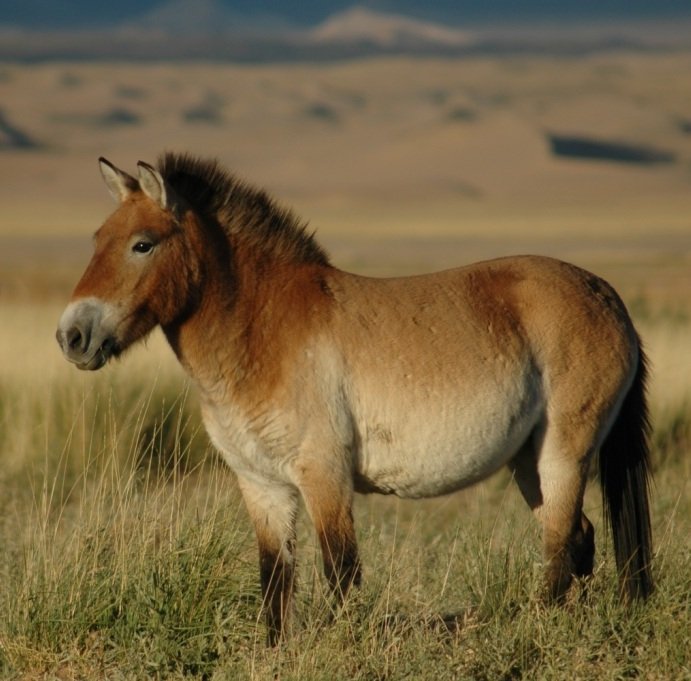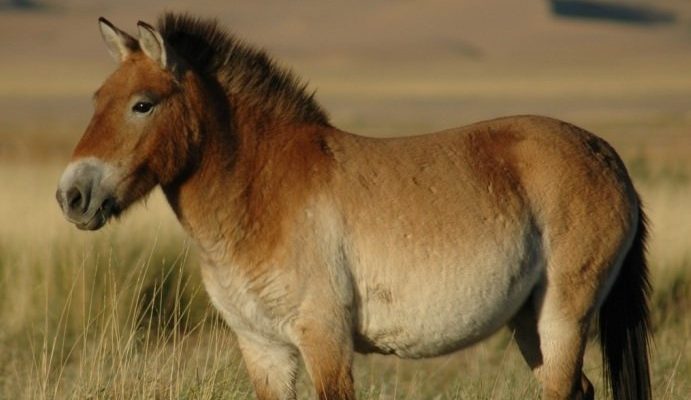
You might be wondering, “Why does this horse matter?” Well, here’s the thing: the Przewalski’s horse is the last true wild horse species left on the planet. It’s not just endangered; it reflects the broader challenges of wildlife conservation. So, as we sip our coffee, let’s dive into the story of this remarkable animal, uncover its conservation status, and explore what’s being done to secure its future.
What Makes the Przewalski’s Horse Unique?
The Przewalski’s horse, known scientifically as *Equus ferus przewalskii*, is a fascinating creature both in appearance and behavior. Unlike domestic horses, it has a more robust body and a unique, upright mane that stands out. Its coat is a warm, sandy brown with a distinct dark stripe running down its back. But it’s not just the looks—its survival traits are incredibly special as well.
In terms of social structure, Przewalski’s horses usually live in small, family groups led by a dominant stallion. They are quite vocal, using a range of whinnies and barks to communicate with each other. This social behavior is critical for their survival in the wild, helping them find food and evade predators. However, these animals face challenges that threaten their very existence.
Why Is the Przewalski’s Horse Endangered?
Historically, the Przewalski’s horse faced a steep decline due to hunting, habitat loss, and competition with livestock. By the early 20th century, they were declared extinct in the wild, with only a few individuals left in captivity. It’s like watching a beloved character from a story disappear altogether. Fortunately, conservationists intervened, leading to breeding programs aimed at reviving the population.
Today, threats still linger. Habitat destruction due to farming and urban expansion continues to put pressure on these horses. Additionally, climate change is altering their natural environment, affecting grasslands where they find food. These factors combined paint a grim picture for a species struggling to survive.
Global Conservation Efforts for Przewalski’s Horse
Since the horse’s near extinction, numerous organizations and conservationists have worked tirelessly to bring them back from the brink. Today, initiatives focus on both captive breeding programs and reintroduction projects in their native habitats. Captive breeding has seen a considerable increase in their numbers, with successful programs around the world.
Reintroduction is another inspiring chapter in the Przewalski’s story. Mongolia, the horse’s original home, has been the primary focus. Conservationists are working diligently to ensure that the horses can thrive in their natural environment again. These efforts symbolize a beacon of hope in global conservation.
The Role of Zoos and Sanctuaries
Zoos and sanctuaries play a crucial role in the conservation of the Przewalski’s horse. They not only help with breeding programs but also educate the public about the importance of wildlife conservation. Seeing these magnificent creatures up close can spark a deeper appreciation for their plight.
Many facilities participate in global breeding programs, sharing genetic information to ensure a healthy and diverse population. These collaborations help maintain a robust gene pool, which is essential for the long-term survival of the species.
What Can You Do to Help?
While the efforts of conservationists are vital, you can also make a difference in preserving the Przewalski’s horse and similar endangered species. Here are a few ways you can get involved:
- Support Conservation Organizations: Donating to or volunteering for wildlife conservation groups can have a significant impact.
- Be a Conscious Consumer: Choose products that are environmentally friendly and support sustainable practices.
- Spread Awareness: Share information on social media to educate others about the importance of wildlife conservation.
Making small, informed choices in your daily life can contribute to larger conservation efforts.
Future Outlook for the Przewalski’s Horse
The future of the Przewalski’s horse is cautiously optimistic, thanks to the dedicated efforts of conservationists and organizations. With ongoing reintroduction programs and increased interest in their preservation, their numbers are gradually climbing. However, the work is far from over.
It’s a bit like a marathon rather than a sprint; ongoing commitment from both local communities and global organizations will be key. Protecting their habitats and ensuring they can coexist with human developments are crucial steps on this journey.
In the grand story of wildlife conservation, the Przewalski’s horse stands out as a testament to what can be achieved when we come together for a common cause. Though it’s faced incredible challenges, the strides made in its restoration highlight the importance of conservation efforts globally.
As we reflect on the plight of the Przewalski’s horse, remember that every action counts. Whether it’s supporting conservation initiatives, spreading awareness, or simply sharing the story of this remarkable animal, you have a role to play. Let’s champion the cause of the Przewalski’s horse together, ensuring that future generations can experience the wonder of this unique species roaming free once again.

